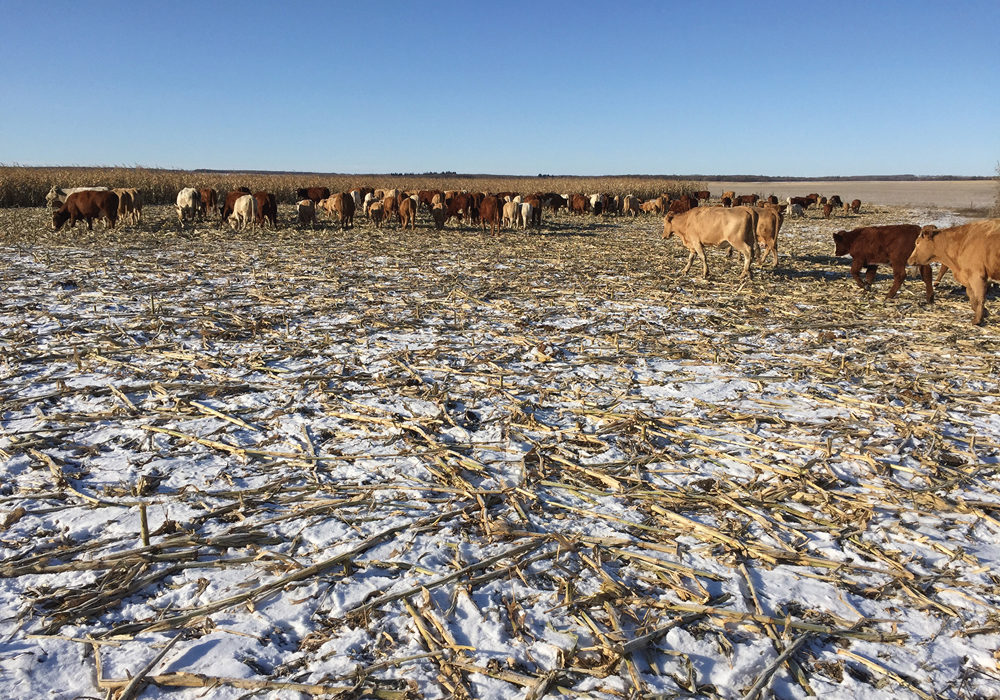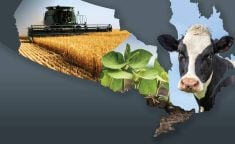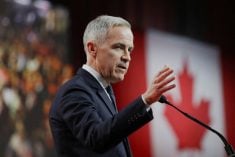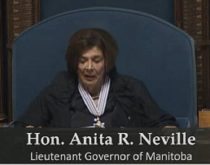Manitoba’s new agriculture minister found himself in the hot seat at the recent annual meeting of the Association of Manitoba Municipalities in Brandon.
Representatives of the 16 rural municipalities who have declared themselves in a state of agriculture emergency chided the province and Minister of Agriculture and Resource Development Blaine Pedersen, for lack of response.
Rob Brunel, a farmer who is mayor of Ste. Rose du Lac, raised the issue of AgriStability and AgriRecovery, as well as a general call for better livestock insurance.

“These producers are dying a slow death,” he said. “We’re seeing an exodus of producers.”
Brunel noted that the area has seen more ranches up for sale as producers face the dual pressure of short feed and the ongoing Crown land regulation issue.
The Municipality of West Interlake also spoke in favour of AgriRecovery.
“AgriRecovery is an ad hoc program, but it’s designed to be put in place when other business risk management programs don’t work,” Reeve Arnthor Jonasson said.
Why it matters: Drought-affected RMs say they need a better response from government and that existing risk programs are inadequate.
The provincial government is on record as opposed to tapping into the AgriRecovery program and providing relief measures such as a freight subsidy to haul feed.
Former agriculture minister Ralph Eichler (now the minister of economic development and training) said in October that he was no longer considering AgriRecovery, despite calls from feed-short municipalities and groups like the Manitoba Beef Producers.
Pedersen echoed Eichler’s arguments Nov. 26.

“I know there’s been calls for freight subsidy,” he told the room, but added that such a subsidy would transfer through to the producers and, “increase the cost of freight and increase the cost of hay.”
“That’s not a solution,” he said.
Pedersen says the livestock sector needs better uptake on forage insurance rather than ad hoc programs like AgriRecovery.
Producer uptake for forage insurance is low, the province admitted. MASC insured 1,237 producers with hay insurance this year, although a representative from MASC noted that “hay insurance” does not account for all “forage-related” programs.
The province announced a review of AgriInsurance in October. The review would target forage insurance and take a hard look on whether the current program was both meeting farmer needs and paying out in a timely manner, the province said at the time.
Read Also

Mazergroup’s Bob Mazer dies
Mazergroup’s Bob Mazer, who helped grow his family’s company into a string of farm equipment dealerships and the main dealer for New Holland machinery in Saskatchewan and Manitoba, died July 6 from cancer.
- Read more: Livestock feed crisis kicks off
Reeve Jonasson said forage insurance uptake reflects shortfalls in the eyes of farmers.
“Clearly, forage insurance for cattle producers in these regions does not work,” Jonasson said.
Pedersen met with eight municipalities during the AMM convention to discuss these very issues, he said.
“That’s my chance to go back to an individual producer sitting there and say, ‘Do you have forage insurance? If you don’t have forage insurance, why don’t you have forage insurance?’” he said.
The problem
Current insurance does not work well for producers on their marginal, and therefore highly variable, land, Brunel noted.
“This has been an ongoing problem but when it comes to no feed and no cash, these producers are really up against the wall,” he said. “We’re really looking for a commitment from the province to design a system so there’s at least a backstop for these people so it’s not always looking for AgriRecovery, which is not on the table, according to the minister.”
The variability of the land makes it difficult to set benchmarks needed for more reliable insurance, such as the options open for grain producers elsewhere in the province, he said.
Pedersen says business risk management will be discussed when provincial and territorial governments meet with the federal government in December.
Duncan Morrison, executive director with the Manitoba Forage and Grassland Association, says organizations like his may have a bigger role in informing producers about available programs.
“Maybe as we start rolling into these times of more climactic events, more weather-related events, maybe there’s an onus on MFGA and some of the other producer groups to start showing more leadership so that producers don’t get caught up unawares,” he said.
The association is invited to give feedback on relevant MASC insurance programs every year, Morrison said.
Forage insurance itself, however, is a “farm gate decision,” he added.
Program challenges
The province was approved to boost AgriStability advances from 50 to 75 per cent in October.
Pedersen also pointed to the federal livestock tax deferral (which allows producers in eligible regions to defer part of their cattle sales to the next tax year) and MASC lending programs.
The province asked MASC to consider deferring all direct loans for six months in October. MASC also offers financing for producers to purchase breeding stock and calves 400 pounds and up.
The livestock deferral, however, requires a producer to cull at least 15 per cent of their breeding stock, at which point 30 per cent of sales can be deferred. A producer would have to get rid of 30 per cent or more of their breeding stock to defer 90 per cent of the sales.
Critics have also argued that the opportunity to take on more debt through MASC does not solve the problem for cash-starved farmers, and that not everyone may be eligible for those financing options.
“They need to sit down with MASC staff if they’re looking at a loan deferral — work through their individual case,” Pedersen said. “We also have staff out on the ground that can help with nutrition and feed plans. Yes, hay is short. There’s no doubt about it, and eight-cent-a-pound hay in southern Manitoba, to take up to the Interlake even with a freight subsidy wouldn’t make sense.”
Pedersen pointed to alternative feeds that might be available and acknowledged that, for many producers, the current situation may involve a hard cull.
“It’s not easy. Nobody’s saying it’s easy, but those tools are there,” he said.




















